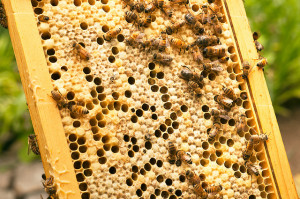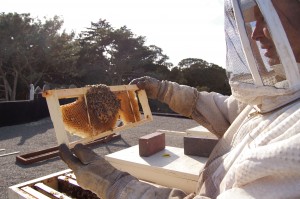A group of renegade agricultural activists is challenging the notion that nothing comes for free by grafting fruit-bearing branches onto trees lining city streets.
Over the past year, the Guerrilla Grafters – a diverse group of volunteers who started in San Francisco – has been splicing fruit-bearing branches onto ornamental fruit trees around the city in an effort to grow apples, cherries, pears, and other fresh produce that urban residence can enjoy for free.
Although the group doesn’t have explicit permission to graft trees, so far they haven’t received any direct push back from city officials.
Several states have laws that specifically ban planting fruit trees in public areas because fallen fruit could pose a health hazard by attracting rodents and insects. The group is addressing this by requiring stewards to tend to each tree. These stewards are in charge of pruning and basic maintenance.
The goal, according to one of the organization’s founding members, Tara Hui, is to “shift away from this notion of scarcity to a feeling of abundance” – especially in under-privileged areas.
Freshening Up Urban Areas
The idea for Guerrilla Grafters sprouted from Hui’s frustration with her own neighborhood, Visitation Valley, which she calls “a food desert” because there are no grocery stores and fresh produce is difficult to find.
“I thought that planting productive trees would be a great way to provide fresh produce at no cost to people in urban areas like mine,” she said.
The organization relies solely on the participation of self-motivated volunteers, and uses the Web as an organizing tool to educate and mobilize individuals who want to spread the organization’s seeds, so to speak.
“This is a project about sustainability,” said Hui. “We are relying on communities of people to participate and help it grow.”
So far, the group’s efforts have been successful. In the past year, the movement has grown from a handful of passionate founders to more than 100 volunteers across three different states. The organization also caught the attention of international audiences in the Netherlands and New Zealand.
In addition to the free fruit, the organization’s founders hope the movement will lead to a shift in people’s attitudes about public spaces. Their motto, after all, is “undoing civilization one branch at a time.”
“If you change the urban landscape by providing free food for people, you can change people’s attitudes about their environment,” said Ian Pollock, a Guerrilla Grafter who helps maintain the group’s website, which is still in development.
“Imagine walking down the street and discovering one apple that is available to you as a gift,” Pollock explained. “I think this would change your relationship to the public sphere because gifts change you emotionally — they create a sense of indebtedness.”
While most of the newly grafted trees have yet to bear any fruit, Pollock said one tree in Hayes Valley sprouted a couple of pears that were picked by a passerby, making members of the organization very happy, Hui added.
“Finding those pears probably made that person’s day,” she said. “We encourage people to walk down the street and help themselves.”
But making something free and publicly accessible can have its drawbacks. Recently the grafts were “hacked” on some flowering Hayes Valley trees, and now the group says it’s not going to publicize where grafts are located.
Getting Involved
It’s relatively easy for anyone to participate in the movement. Volunteers need only a few simple tools to graft: a kitchen knife, a towel, some electrical tape, and a pair of gloves. Volunteers in the Bay Area can find scions at the California Rare Fruit Growers association or get donated branches from backyard gardeners and regional orchards.
By the end of the season in March, the group hopes to have grafted three-to-four dozen fruit branches onto trees around the San Francisco Bay Area, including Hayes Valley, Noe Valley, Portola, and Visitation Valley.
In the future, Hui hopes the trees will produce enough fruit to be able to harvest and give to local organizations that will feed people in need.

.jpg)


-300x199.jpg)